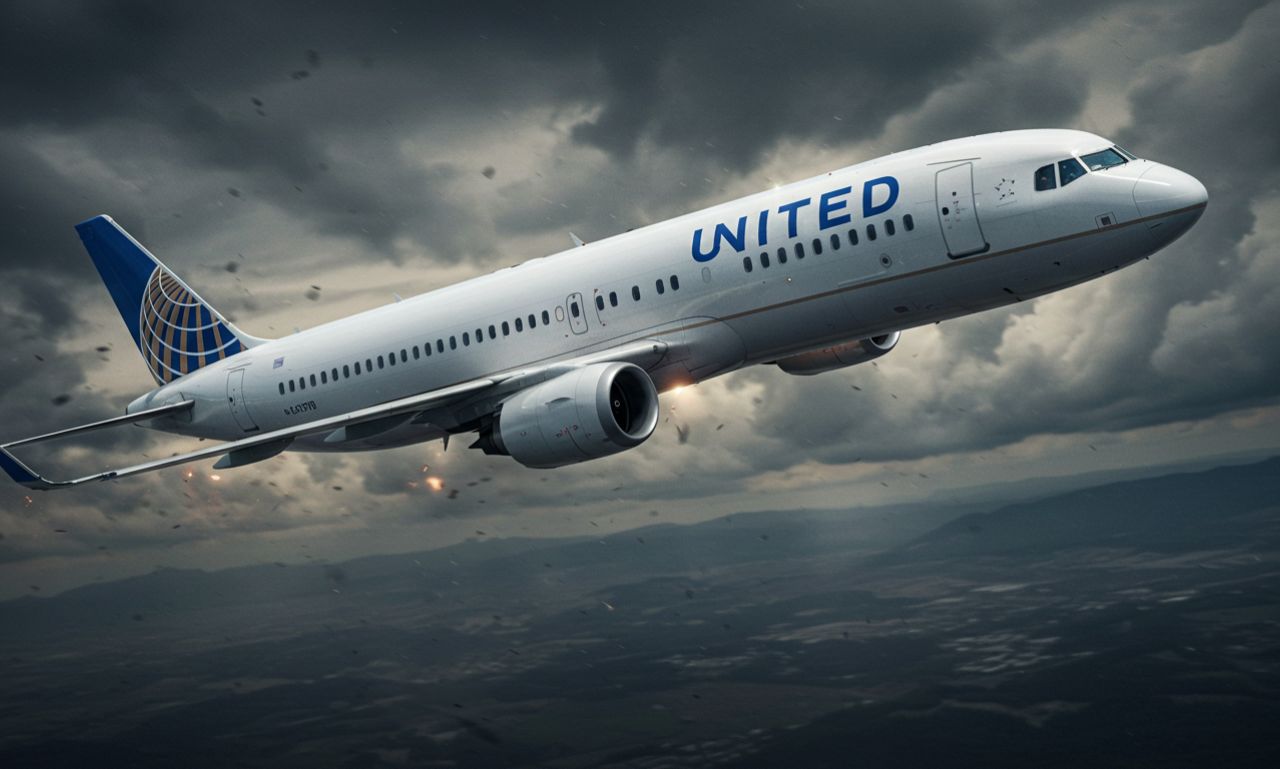The phrase United Airlines UA770 emergency diversion captured headlines in 2025 when a routine transatlantic flight was forced to deviate mid-air. What caused this drastic move? How did crews and the airline respond? And what can travelers and the aviation community learn from it? This deep dive examines the full story, from the technical trigger to the human and procedural aftermath.
Flight UA770 Background & Incident Summary
United Airlines Emergency Diversion Route & Aircraft
-
On May 27, 2025, United Airlines Flight UA770—a Boeing 787-9 Dreamliner—departed Barcelona (BCN) bound for Chicago O’Hare (ORD). Techhuda.com+3VisaVerge+3BizzBuzz+3
-
The flight carried approximately 257 passengers and 12 crew members. VisaVerge+3BizzBuzz+3getlistedae.com+3
United Airlines Emergency Diversion Suspected Cabin Pressurization Anomaly
-
While cruising at about 37,000 feet, the crew detected a potential cabin pressurization anomaly. Techhuda.com+4VisaVerge+4BizzBuzz+4
-
In response, they declared a general emergency (squawk 7700) to alert air traffic control of an urgent situation. AIRLIVE+4VisaVerge+4Techhuda.com+4
Diversion to Heathrow & Safe Landing
-
The crew diverted the aircraft to London Heathrow Airport (LHR). Vogue Vocal+3VisaVerge+3Cordless.io+3
-
UA770 landed safely on Runway 27R, then taxied to Gate B44. VisaVerge+2BizzBuzz+2
-
Importantly: no injuries were reported among passengers or crew. Cordless.io+3BizzBuzz+3Vogue Vocal+3
-
United Airlines promptly arranged passenger rebooking, hotel stays (if needed), meals, and coordinated inspections of the aircraft. VisaVerge+2BizzBuzz+2
Why the Diversion Was Executed United Airlines Emergency Diversion
The Role of Cabin Pressurization Systems United Airlines Emergency Diversion
At high altitudes, maintaining cabin pressure is critical for passenger safety and comfort. A pressurization anomaly—even before full decompression—can signal sensor failures, leaking valves, or environmental control system faults. The crew’s detection of that anomaly triggered conservative protocols.
Use of Squawk 7700 & Priority Handling
When the crew set the transponder to 7700, it broadcasted a “general emergency” code recognized by ATC globally. This ensures priority routing, clearance, and readiness of airport emergency services. AIRLIVE+3VisaVerge+3Cordless.io+3
Why Heathrow Was Selected
Several reasons made Heathrow the logical diversion choice:
-
It’s a major hub with full emergency infrastructure and ground support.
-
Its location was favorable relative to UA770’s flight path over Western Europe.
-
United already maintains presence and logistical capability in the London/UK region, aiding passenger support and aircraft servicing.
Decision-Making & Crew Response
Chain of Command & Safety First
The pilot-in-command holds ultimate responsibility. Upon detecting the anomaly, the chain of decisions typically includes:
-
Assess status of systems via cockpit alerts and redundancies
-
Consult with airline operations or dispatch (if needed)
-
Declare emergency if required
-
Coordinate with ATC and choose alternate airport
-
Prepare cabin for descent/landing and communicate to passengers
In UA770’s case, the crew acted decisively rather than waiting for further escalation—a hallmark of conservative safety culture.
Cabin Crew’s Role & Passenger Management
Crew members maintained calm, relayed information to passengers, managed cabin preparation, and followed emergency checklists. Passenger accounts highlight that regular updates and composure by the crew helped mitigate panic or confusion.
Passenger Experience & Aftermath
Onboard Atmosphere & Communication
Moments of uncertainty likely prevailed, but multiple reports suggest:
-
Oxygen masks did not deploy (indicating a precaution, not full depressurization) Techhuda.com+3Vogue Vocal+3Cordless.io+3
-
The cabin’s descent was controlled.
-
Information was shared intermittently by crew to avoid speculation and maintain calm.
After Landing: Rebooking & Support
Once on the ground, United Airlines engaged in Irregular Operations (IROP) protocols:
-
Comprehensive inspections of the aircraft
-
Rebooking affected passengers to alternate flights
-
Meal vouchers, transportation, and hotel accommodation (if overnight stay required)
-
Public communication via statements and customer updates
The airline’s emphasis was on passenger welfare and rapid recovery of disrupted travel plans.
Technical & Regulatory Review
Post-Incident Inspections & United Airlines Emergency Diversion
Once grounded, the aircraft underwent extensive systems inspections, focusing on:
-
The pressurization / environmental control systems
-
Sensor calibration and redundancies
-
Flight data recorder (FDR) and cockpit voice recorder (CVR) logs
-
Review of crew actions, timestamps, and communications
Regulators such as the FAA (in U.S. jurisdiction) or European aviation authorities become involved in oversight, depending on the airspace and aircraft registry. Techhuda.com+4ventsmagazine.co.uk+4Cordless.io+4
United Airlines Emergency Diversion Safety Culture & Lessons
This incident reinforces several key lessons:
-
Early detection and conservative decision-making avert worse outcomes
-
Redundant systems must remain rigorously maintained
-
Crew training in emergency protocols remains essential
-
Transparency post-event helps maintain trust with the public
Broader Implications & Industry Context
Diversions: Rare But Expected Safety Layer
Emergency diversions are uncommon but not unprecedented. Aviation experts treat them as an extension of a resilient safety net, not a failure in itself. UA770’s safe diversion underscores that flexibility and readiness are integral to safe air travel.
Trust, Reputation & Passenger Perception
How airlines respond in emergencies shapes public perception. Calm execution, clear communication, and prompt passenger care help preserve trust—even when plans go awry.
Technology & Preventive Trends
-
Increasing use of real-time health-monitoring systems aboard aircraft to detect anomalies early
-
Predictive maintenance algorithms that flag potential issues before dispatch
-
More rigorous simulation training for emergency scenarios
-
Enhanced communication systems to keep passengers informed during disruptions
Key Takeaways:United Airlines Emergency Diversion
-
Safety margins matter – Early detection and conservative choices prevent escalation.
-
Diversion ≠ disaster – It’s a recalibration, not a failure.
-
Crew professionalism is vital – Calm leadership and communication reduce panic.
-
Passenger support must be immediate – Disrupted plans need swift relief.
-
Continuous improvement – Post-incident analysis drives aviation safety forward.
United Airlines Emergency Diversion Suspected Cabin Pressurization Anomaly
-
While cruising at about 37,000 feet, the crew detected a potential cabin pressurization anomaly. Techhuda.com+4VisaVerge+4BizzBuzz+4
-
In response, they declared a general emergency (squawk 7700) to alert air traffic control of an urgent situation. AIRLIVE+4VisaVerge+4Techhuda.com+4

